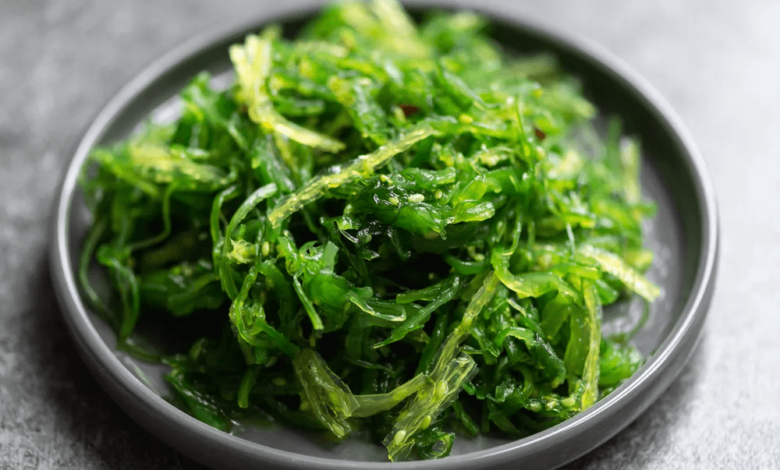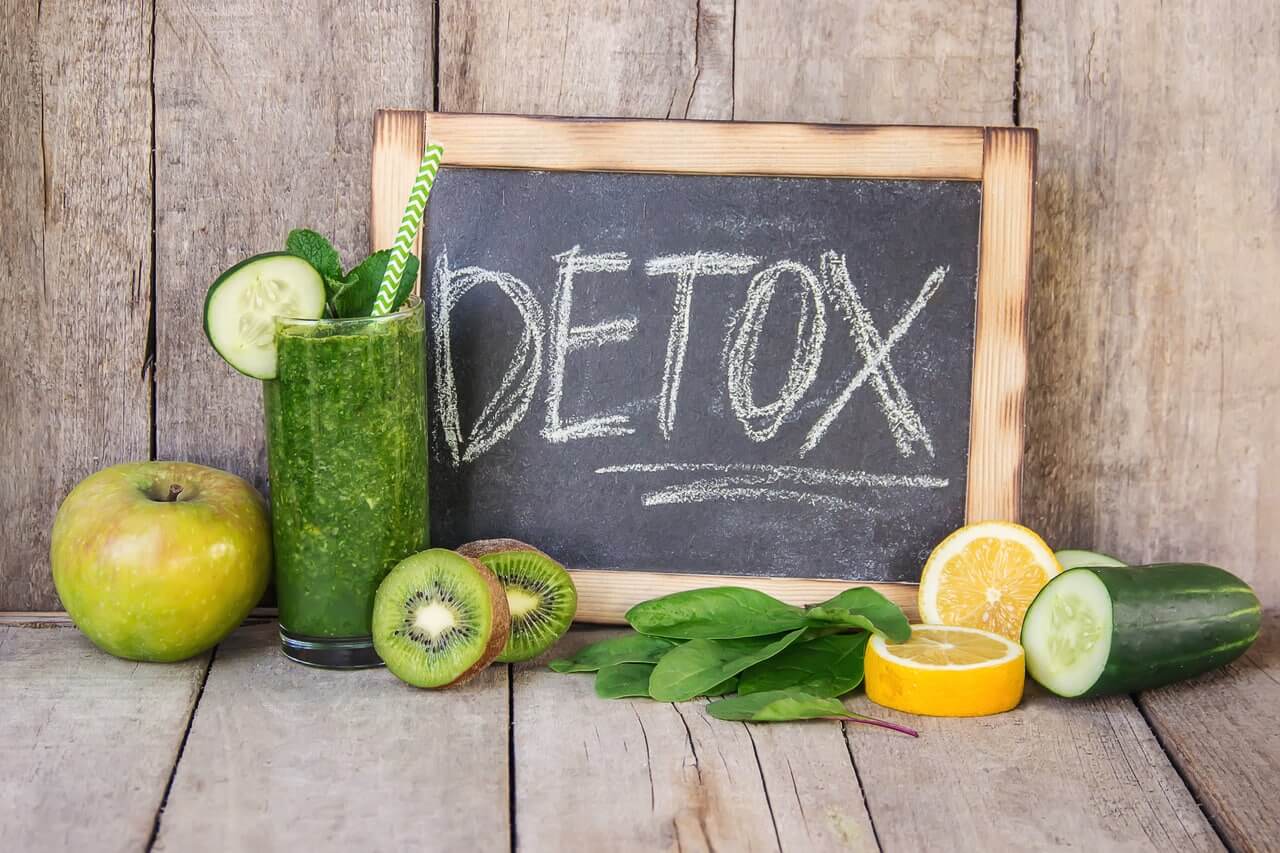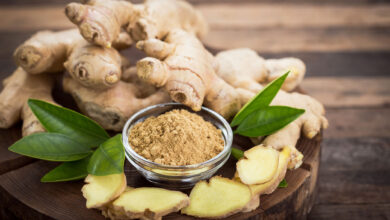7 Powerful Health Benefits Of Seaweed | Super Healthy & Nutritious

Most of us have enjoyed some flavorful, sticky sushi over the years, and likely had our first taste of seaweed in doing so. Filled with vitamins, minerals and antioxidants, this are some of incredibly powerful health benefits Of Seaweed, this super food is under-utilized in western diets in early 90’s.
But you don’t have to spend a fortune in a sushi restaurant every time you want a bite of this extraordinarily nutritious fare, which is abundantly available in the wild. And you don’t necessarily have to eat it to reap some of it’s health benefits.
Different Varieties Of Seaweed
There are more than 100 different species of edible seaweed, and around 10,000 species of macro-algae. Seaweed comes in three color varieties – red, brown and green. Brown varieties of seaweed are the most commonly eaten, including wakame and kelp.

They are also the varieties that have had the most scientific research conducted on them. The next most common is red seaweed, such as nori, which is the one you would be familiar with if you frequent sushi restaurants.
Unsurprisingly, the most common seaweed-based diets are eaten in Japan, which is where sushi originates, and Japanese diets are among the healthiest in the world.
Amazing Health Benefits Of Seaweed
1. High Source Of Vitamins And Minerals
Seaweed is most commonly known as an exceptional source of iodine, which is a nutrient missing from just about every other food. Although there are some problems with consuming too much iodine, maintaining healthy levels of the non-metallic mineral through your diet is critically important for a healthy thyroid.
If the thyroid, which is a gland in the neck that helps produce and regulate hormones, is not healthy due to a lack of iodine, it can cause weakness, high cholesterol and fatigue.
In the long-term, an underactive thyroid caused by an iodine deficiency can lead to a number of health problems and serious medical conditions, including depression, obesity, heart palpitations, memory loss and goiters.
Sea-weed is also a source of protein, vanadium, magnesium, calcium, and vitamins A, C and K. Vanadium is an important mineral that is rarely found in food. It is required in trace amounts to assist in the metabolizing of carbohydrates.
One cup of nori seaweed provides 83% of your daily recommended intake of vitamin A, and 52% of your daily value of vitamin C. Vitamins A and C are both essential in maintaining a strong immune system, and vitamin A is important for eye health.
Vitamin C is also beneficial in maintaining healthy joints and it helps the body absorb iron from plant-based foods.
2. Seaweed May Help Regulate Estrogen And Estradiol Levels
These two hormones are responsible for the proper development and function of the sexual organs. Research suggests that eating seaweed may help regulate estrogen and estradiol levels, potentially reducing the risk of breast cancer, improving female fertility issues, and even controlling symptoms of PMS.
According to the study, the adsorption effect of dietary fibers on extrinsic estrogen from seaweed is more effective from brown seaweeds than red seaweeds.
3. Seaweed Helps Prevent Inflammation
A number of studies have proven that seaweed is an extremely powerful source of antioxidants, which help prevent inflammation. As a result, eating seaweed may reduce the risk of arthritis, celiac disease, asthma, depression and obesity.
A study into the antioxidant activity of two edible green seaweeds, ulva genus and ulva prolifera, found varying levels of phenolic compounds, which are one of the most effective antioxidants in marine algae.
4. Seaweed Detoxifies From The Inside Out
Seaweed removes fats and toxins from the body and helps protect the liver from toxic damage. The sodium alginate in seaweed, especially kelp, absorbs toxins from the digestive tract.

A Canadian study from McGill University found that seaweed soaks up cadmium and lead from inside the body, which can accumulate from cigarette smoke and industrial and transportation waste in the environment.
Green seaweed is also a potent detoxifier because of the presence of chlorophyll in it, which contains special fibers that bind and remove unwanted toxins.
5. Seaweed Is Full Of Skin-Healthy Minerals
Seaweed has more than 50 powerful minerals and, because of that, people have enjoyed long soaks in seaweed baths for centuries. The heavy-duty detoxification properties in mineral-rich seaweed nourish and rejuvenate the skin, fight cellulite and minimize the visible appearance of wrinkles.
As well as fighting signs of ageing, seaweed extracts can minimize pigmentation and blotchiness in the skin, especially paler skin types. Brown algae complex is used in eye creams, facial serums and moisturizers for a very high concentrated dose of antioxidants, which fight visible signs of ageing in the skin.
It works by protecting the membranes of skin cells and preventing damage to the skin’s natural amino acids. By strengthening cell membranes, environmental impacts that accelerate skin ageing are slowed down.
6. Seaweed Strengthens Hair
As well as improving the quality and strength of skin, seaweed extracts help improve hair health and strength, aiding it in rebuilding itself. Eating seaweed or taking marine extract supplements encourages scalp hydration, which revitalizes dry hair, and it can also increase hair mineralization, promoting thicker, stronger hair.

Seaweed-based shampoos and conditioners can also improve the appearance and shine of hair, protecting it against environmental damage. A Korean university study found that the hair-growth effects of seaweed could be beneficial in treating spot baldness in the future.
7. Seaweed Is A Natural Pick-Me-Up And Tonic
Seaweed-based drinks and soups have been consumed in Ireland and the Caribbean for centuries as all-round tonics or as a pick-me-up, especially after an illness. Some claim kelp can reduce phlegm and reduce swelling, and it is also used as a natural hangover cure in some areas.
Brown seaweed may assist the acid-alkaline balance, and has a prebiotic effect on the gut flora, which helps protect the gut lining. Seaweed is also used in home remedies to heal digestive problems.
Research suggests that brown seaweed may be a good weight management tool as well because of its effects on lipase activity, which is an enzyme used by the body to break down fats.
Potential Health Problems from Seaweed
While seaweed can definitely be considered a superfood for its extraordinary health benefits, there are potential health issues to consider before adding it to every meal.
Dulse, a type of red seaweed, for example, has more than 30 times the amount of potassium than an equally sized piece of banana. Eating that much potassium runs the risk of causing heart palpitations in people with kidney problems, however, it doesn’t pose a threat in people without pre-existing problems.
The second thing to be aware of is that the US Food and Drug Administration regulates commercial seaweed but not seaweed supplements, which means they could potentially come from contaminated waters that may contain toxic metals.
If you do want to try seaweed pills, it’s important to choose reputable brands to avoid potentially taking in metals, which can be especially dangerous to pregnant or breastfeeding women and their babies.
Try These Delicious And Healthy Seaweed Recipes
Seaweed is extremely versatile and can be used in a number of recipes and drinks, but you can also simply use it as a seasoning instead of salt to get your daily dose of its vitamins and minerals.
— Tofu Gimbap
Traditional gimbap is made with meat, but this vegan option uses tofu instead. It is a delicious, filling sushi roll with healthy, refreshing vegetables and braised burdock root wrapped in nori seaweed.
The author focuses on fresh vegetables and homemade ingredients, creating a fairly simple, but very rewarding lunch or dinner dish!
— 5-Minute Coconut Oil Sriracha Popcorn With Nori
This tasty, crunchy snack is packed full of fiber, protein and powerful nutrients. The seaweed and nutritional yeast in the recipe create an irresistible umami flavor and the sriracha adds a little spicy kick, while the coconut oil that the popcorn is cooked in adds another taste dimension.
The blogger also offers great instructions on how to easily make popcorn using the traditional method, rather than the microwave.
— Nori Tagliatelle With Uni (Sea Urchin)
This sounds fascinating, doesn’t it? Not only will you learn how to make an incredible seaweed dish, but this hearty, mouthwatering recipe gives readers a step-by-step guide on how to make traditional homemade Italian pasta.
Once you’ve mastered the fairly easy but quite messy and time-consuming art of making homemade pasta (aka the best pasta you will ever taste), this recipe involves simply grinding the nori into a powder using a spice grinder and adding to the pasta dough.
You could eat the seaweed pasta with any sauce, but this blog includes a very interesting sea urchin recipe, which includes uni, olive oil, chili pepper, orange peel, black and white sesame seeds, Japanese pepper, seaweed and ground ginger.
— Zesty Seaweed Chips
If you love seaweed chips but find the price tags on the little ready-made packaged portions a bit hard to swallow, then this will be your savior!
This flavorful, zesty recipe is a fantastic healthier alternative to potato chips that will satisfy any savory craving, and it is a lot easier and quicker than you probably imagine.
— Shungiku Tomato Pasta
If you haven’t heard of Shungiku, it is a leafy green vegetable that is packed full of flavor, with a fresh, astringent taste. The vegetable is traditionally used in Japanese hot pot dishes like nabemono and sukiyaki.
Mixed with dried, salted kombu seaweed, garlic, olive oil and tomato, this pasta recipe is a party for the taste buds if you like rich, flavorful food, and it is so quick and easy to prepare!
Benefits of Using Seaweed On The Skin
One of the best ways to reap the benefits of seaweed is by using it on the skin, which is why it is commonly used as a spa ingredient. Seaweed baths are extremely popular, particularly in the west of Ireland, where a bath is filled with boiling hot seawater and packed full of seaweed – usually Fucus serratus.
The scorching water releases the minerals from the seaweed as it steeps and after about 20 minutes or half-an-hour, you can add some cold water to the bath and soak in the salty, mineral-rich water.
Besides enjoying a seaweed bath at a day spa, you can also buy packets of seaweed online or at some health stores to create your own bath at home. Seaweed baths have been used as a treatment for arthritis and rheumatism as well as to nourish and rejuvenate dry skin.
Seaweed extract is also a popular ingredient in body masks, moisturizers and creams, but it can cost a fortune if you always rely on the professionals for a facial or body wrap at a day spa. Try these home seaweed spa treatments and enjoy the benefits without the excessive price tag!
DIY Revitalizing Seaweed Mask – This vitamin and mineral-rich mask will tone and moisturize the skin, soothe any inflammation, unclog pores and help remove toxins from the body.
All you need is kelp powder, which is readily available at most health food stores, aloe Vera gel, and distilled water.
Conclusion
Seaweed’s journey from the depths of the ocean to our plates has unveiled a treasure trove of health benefits. Whether enjoyed as part of a sushi roll, incorporated into salads, or consumed as a supplement, seaweed offers a unique combination of nutrients that can positively impact various aspects of health.
As we continue to explore the potential of this marine superfood, incorporating seaweed into a balanced diet may pave the way for improved well-being and a healthier future.





